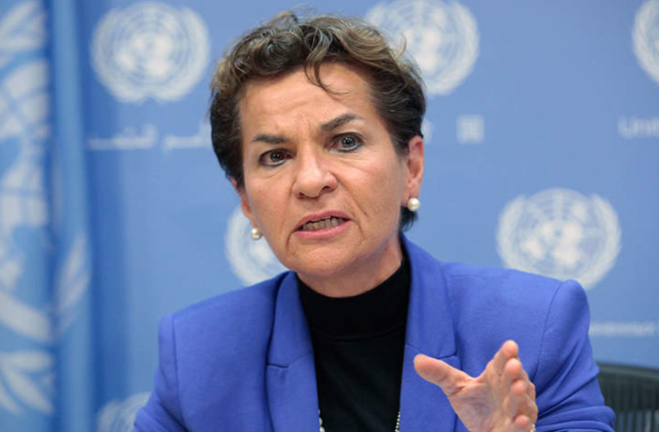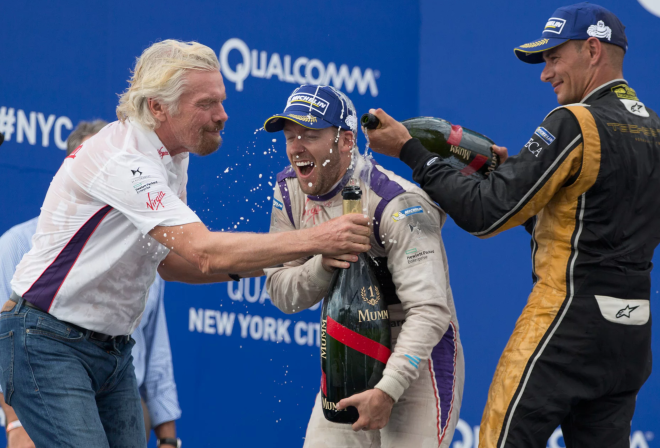The highs and lows of Green-Sports are reflected in today’s GSB News & Notes: On the high side, MLB’s “Green Glove” award goes to the Seattle Mariners for the first time. And Formula E’s stature on the global sports stage continues to grow as it appoints former UN Climate Chief Christiana Figueres to co-lead its Global Advisory Board. As for a down note, a major cricket match in Delhi between Sri Lanka and India was repeatedly interrupted due to excessive air pollution.
SEATTLE MARINERS WIN “GREEN GLOVE” AWARD, ENDING SAN FRANCISCO GIANTS’ NINE YEAR REIGN AS MLB CLUB WITH HIGHEST WASTE DIVERSION RATE
The Seattle Mariners, a founding member of the Green Sports Alliance, were recently awarded Major League Baseball’s (MLB’s) “Green Glove Award” in recognition of their sustainability efforts at Safeco Field this season, ending the nine year reign of the San Francisco Giants.

Safeco Field, home of the Seattle Mariners, winners of MLB’s Green Glove Award for 2017 (Photo credit: Ballparks of Baseball)
According to a November 28 story on MLB.com by Greg Johns, the Mariners were recognized as the MLB club with the highest rate of waste diversion from landfill:
The M’s, who replaced concourse garbage cans with compost and recycling bins, diverted 96 percent of waste materials from the ballpark in 2017, up from 90 percent a year ago.
And the Mariners sustainability efforts go much deeper than waste diversion. The club:
- Was the first in MLB to use energy-efficient LED lights.
- Hired cleaning crews to separate plastics and compostable waste by hand after each game
- Manages an urban garden which provides vegetables, herbs and radishes to concession stands and restaurants at the ballpark.
- Work with Eco-Products to utilize compostable serviceware like soft drink, beer and coffee cups, plates, lids, and cutlery at Safeco Field
- Participated, along with the Seahawks, Sounders and more than 100 other Seattle-based businesses, in the “Strawless in Seattle” September effort. This innovative program, developed by the Lonely Whale Foundation, worked to reduce the use of plastic straws in the fight against ocean pollution.
“We are thrilled to present the Seattle Mariners with the 2017 Green Glove Award,” said Paul Hanlon, senior director of ballpark operations and sustainability for Major League Baseball, in a statement. “With its 96 percent conversion rate at the top of the list, the club has done a tremendous job of promoting and instilling sustainability practices and initiatives that will positively impact our environment.”
“We have worked hard over the years to make Safeco Field one of the ‘greenest’ ballparks in pro sports,” said Mariners senior vice president of ballpark operations Trevor Gooby, in a statement. “With our hospitality partner Centerplate, and our founding sustainability partner BASF, we have been able to significantly reduce our impact on the environment.”
CHRISTIANA FIGUERES, FORMER UN CLIMATE CHIEF, TO LEAD FORMULA E GLOBAL ADVISORY BOARD
Sam Bird of Great Britain, driving for the DS Virgin team, won the opening race of the 2017-2018 Formula E season in Hong Kong 10 days ago.
Off the race track, the increasingly popular open wheel electric vehicle (EV) street racing circuit added serious climate change chops to its Global Advisory Board when in named former UN climate chief Christiana Figueres as co-leader. She will be joined by Alain Prost, the retired 4-time Formula One world champion from France.

Christiana Figueres, new co-leader of Formula E (Photo credit: United Nations)
The Formula E Global Advisory Board plays an important role in the growth of the circuit, and more broadly, EV racing and adoption. Per a November 28 article in CleanTechnica by James Ayre, the board advises relevant parties on topics relating to “sustainability, the media, and business.”
Reuters reports that Figueres and Prost will lead a board made up of motor sports and business all-stars, including “Formula E founder Alejandro Agag, chairman of Chinese telecommunications leader SINA Charles Chao, Jaguar Land Rover’s chief marketing officer Gerd Mauser, and former McLaren Formula 1 team boss Martin Whitmarsh. Brazil’s reigning Formula E champion Lucas di Grassi and Swiss private bank Julius Baer’s head of global sponsor[ship] Marco Parroni are also on the board.”
I cannot think of a stronger, more important voice to help lead Formula E from post start up to maturity than Christiana Figueres.
A longtime Costa Rican diplomat, Figueres served as executive secretary of the United Nations Framework Convention on Climate Change (UNFCCC). She is most well known for her work helping to push 2015 Paris Climate Agreement, signed by nearly 200 countries, across the finish line. She has been a strong, consistent voice behind the global need to rapidly move away from the use of fossil fuels and towards the widespread adoption of EVs and other types of electric-powered mobility. This is, of course, Formula E’s raison d’être.
“In order to meet the objectives set out by the Paris agreement and prevent global temperatures spiralling out of control, we must have a need for speed and react quickly,” Figueres said in a statement. “This unique forum at Formula E will allow us to bring great minds together with the same common goal, speeding-up the transition and use of electric vehicles in everyday life.”
She will help preside over a season that will feature races in three new cities (Santiago, Chile; Sao Paulo, Brazil and Rome), a return to the streets of Brooklyn in early July and a finale in Montreal July 28-29.
SRI LANKAN CRICKETERS BECOME ILL DUE TO POLLUTION DURING MATCH IN DELHI
My mental picture of cricket, admittedly a sport about which I know next to nothing, includes a gigantic oval field with no foul territory, players dressed in all white, somewhat formal uniforms, and those same players relaxing during a break for a spot of tea.
That vision most certainly does not include, well, vomiting.
Maybe I need a new glasses prescription.
Michael Safi reported in Sunday’s issue of The Guardian, with assistance from Agence France-Presse, that a cricket Test match# in Delhi between India and Sri Lanka “was repeatedly interrupted on Sunday with claims players were ‘continuously vomiting’ due to hazardous pollution levels in the Indian capital.”
Airborne pollution levels 15 times the World Health Organization limits were recorded on the second day of the match at Feroz Shah Kotla Stadium in Delhi on Sunday. Per Safi, “as the haze worsened, many Sri Lankan players returned from lunch wearing face masks before complaining to umpires, who halted play for 20 minutes to consult with team doctors and match officials.”
Announcers said it was the first recorded instance of an international cricket match being halted due to the toxic smog that reaches hazardous levels in northern India during the winter months.
The match resumed but was interrupted twice more as Sri Lankan players Lahiru Gamage and Suranga Lakmal left the field with breathing difficulties.
“We had players coming off the field and vomiting,” Sri Lanka coach Nick Pothas told reporters. “There were oxygen cylinders in the [locker] room. It’s not normal for players to suffer in that way while playing the game…I think it’s the first time that everybody has come across [the vomiting] situation.”

A paramedic speaks to Sri Lanka’s Lahiru Gamage after he complained of shortness of breath (Photo credit: Altaf Qadri/AP)
CK Khanna, acting president of India’s cricket board, said the Sri Lankans were making much ado about nothing: “If 20,000 people in the stands did not have problems and the Indian team did not face any issue, I wonder why the Sri Lankan team made a big fuss?” The crowd agreed, showering boos upon Sri Lanka’s batsmen.

Sri Lanka’s captain Dinesh Chandimal fields in a mask (Photo credit: Altaf Qadri/AP)
The effects of the city’s polluted air were not limited to cricket: Schools were shut and doctors declared a public health emergency in Delhi last month as pollution levels spiked to an unimaginable 40 times the WHO safe limits, which is equivalent to smoking at least 50 cigarettes per day.
Delhi officials have been accused of not preparing for what has become an annual crisis each winter, while the Indian government has downplayed the urgency and health risks associated with the problem.
The city’s extremely poor air quality is the result of a combination of road dust, open fires, vehicle exhaust fumes, industrial emissions and the burning of crop residues in neighbouring states. Indian weather agencies also blame dust storms that originate in the Persian Gulf to the country’s west.
# Test cricket is the longest form of of the sport and is considered its highest level. Test matches can last as long as five days.
Please comment below!
Email us: lew@greensportsblog.com
Friend us on Facebook: http://facebook.com/greensportsblog
Tweet us @GreenSportsBlog


